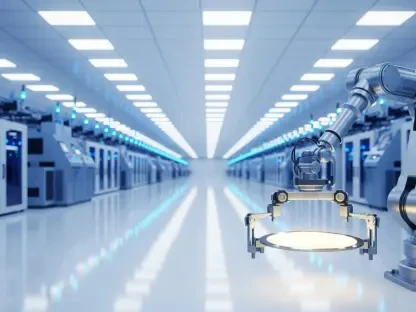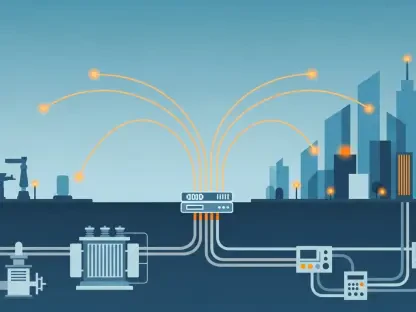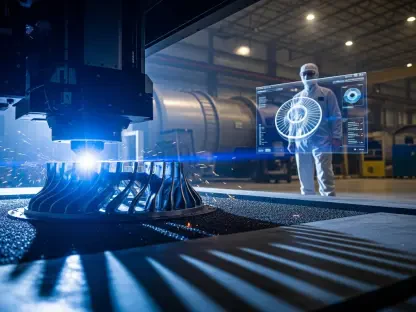In Detroit at the recent A3 Automation Show, OPT Machine Vision unveiled a suite of cutting-edge machine vision inspection solutions, marking a significant stride forward in the realm of smart manufacturing. As industries progressively embrace the principles of Industry 4.0, the integration of artificial intelligence in vision systems has become paramount. OPT’s innovations, particularly in high-precision vision systems, are instrumental in driving efficiency and quality in sectors such as automotive, electronics, and industrial automation. This development underscores the pivotal role that AI is playing in transforming traditional manufacturing processes into highly adaptive systems capable of real-time decision-making and advanced analytics.
Breakthroughs in AI-Powered Inspection Systems
Ultra-High-Resolution Imaging
One of the most striking advancements presented by OPT was their AI-driven inspection systems, which leverage ultra-high-resolution imaging technologies to enhance the accuracy of defect detection in manufacturing. The integration of such imaging solutions addresses the critical requirements of industries that demand precision and speed. These systems employ advanced optics for various applications, ensuring that manufacturers can maintain high standards of quality control while optimizing production efficiency. The sophistication of AI technologies allows the systems to adapt to different factory environments seamlessly, making them highly scalable and versatile for application across multiple industries. Such adaptability is a testament to AI’s capability to revolutionize traditional manufacturing setups by introducing smarter, more responsive systems.
Time-Division Strobe Technology
Foregrounding precision, OPT introduced their Time-Division Strobe Technology at the show. This technology synchronizes 8K ultra-HD cameras with hybrid illumination controllers, facilitating the capture of both bright-field and dark-field images simultaneously in a single scan. These capabilities significantly bolster defect detection processes by offering enhanced clarity and detail at standard production speeds. The ability to process high-frequency information with such precision is crucial for maintaining quality in mass production environments. The seamless integration of AI ensures that these systems continuously adapt, refining their performance for optimal results. This advancement highlights the commitment of OPT to push technological boundaries, improving quality control measures in modern manufacturing landscapes.
Tackling Complex Surface Inspections
Curved Surface Imaging Solutions
Another prominent feature of OPT’s offerings is their patented curved surface imaging solution, specifically engineered to address the challenges posed by high-curvature surface inspections. This technology combines specialized curved lenses and C-shaped LED illumination with AI-based defect classification, producing artifact-free images of complex geometries. Unlike traditional systems that face difficulties with distorted images when inspecting curved surfaces, OPT’s solution offers pristine quality, ensuring accuracy in dimensional assessments. The application of AI in defect classification enhances the system’s ability to identify irregularities swiftly, underlining the importance of smart technologies in resolving intricate manufacturing challenges.
Rhino Series Bi-Telecentric Optics
The introduction of the Rhino Series Bi-Telecentric Optics has further elevated the capabilities of industrial vision systems by translating lab-grade metrology techniques to a factory setting. This innovation ensures zero perspective error, ultra-low distortion, and a rugged design that withstands the rigorous demands of industrial environments. By implementing dual telecentric optics, the system achieves sub-micron accuracy in dimensional inspection, setting a new standard for precision in manufacturing processes. The robustness of these systems exemplifies the seamless blend of laboratory expertise with industrial practicality, emphasizing the need for durable, high-performance solutions in today’s competitive manufacturing landscape.
AI Integration and Scalability
Deep Learning and Adaptive Algorithms
A pivotal aspect of OPT’s innovation lies in the emphasis on AI integration and scalability, an approach that leverages deep learning and adaptive algorithms to enhance their vision systems’ functionality. These intelligent systems are designed to integrate seamlessly into smart factory environments, bolstering real-time analytics capabilities. This integration is instrumental in achieving near-zero defect rates, a benchmark crucial for maintaining efficiency and reducing wastage in production lines. The adaptive nature of AI allows these systems to evolve, continuously improving their operations as they gain insights from ongoing data streams in dynamic manufacturing settings. The strategic application of AI demonstrates a commitment to driving progress in production methodologies by harnessing the power of intelligent technologies.
The Role of AI in Smart Manufacturing
At the recent A3 Automation Show in Detroit, OPT Machine Vision showcased a suite of advanced machine vision inspection solutions, signaling a leap forward in smart manufacturing technology. As industries increasingly adopt Industry 4.0 principles, integrating artificial intelligence (AI) into vision systems has become crucial. OPT’s cutting-edge innovations in high-precision vision systems are key to enhancing efficiency and quality in several sectors, including automotive, electronics, and industrial automation. This advancement highlights AI’s essential role in revolutionizing traditional manufacturing into adaptive systems with real-time decision-making and advanced analytics capabilities. Such smart systems can rapidly adjust to complex demands, optimizing processes and improving outcomes across industries. With AI-integrated machine vision, manufacturers can achieve unprecedented levels of precision and effectiveness, paving the way for a future where technology profoundly transforms industrial landscapes.









